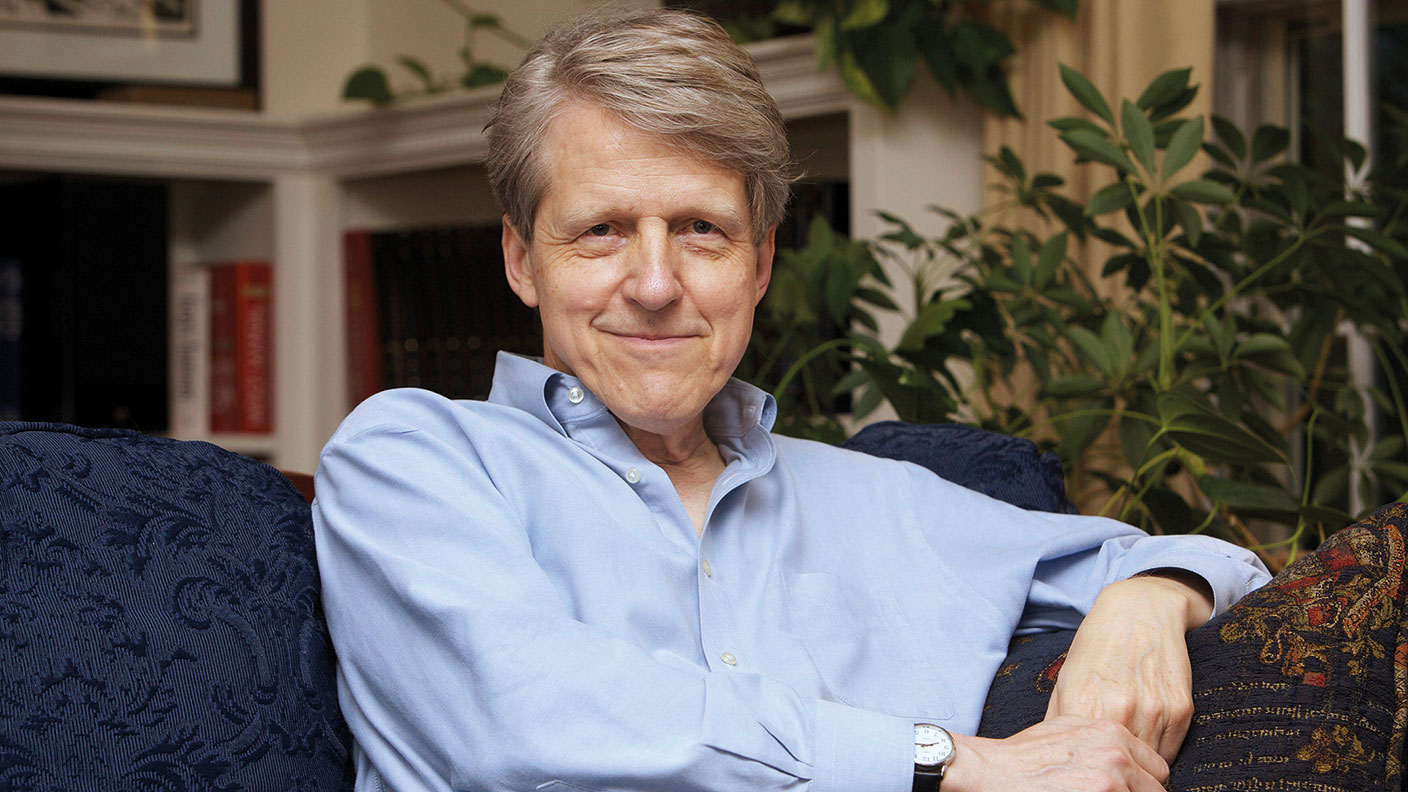US stocks are cheaper than they look – but are they cheap enough?
Adjusted for low interest rates, US stocks are not as pricey as they seem. But you may still be better off elsewhere, says John Stepek.


One of our favourite valuation ratios here at MoneyWeek is the cyclically-adjusted price/earnings ratio (Cape). The Cape – also known as the Shiller Cape, after Professor Robert Shiller, who popularised it – is similar to a standard p/e ratio (see below) in that it looks at how expensive a company or index is relative to the earnings it generates. But rather than a single year of earnings, the Cape takes average real (inflation-adjusted) earnings over ten years. This smooths out cyclical ups and downs and gives a clearer picture of whether a market is truly cheap or not. History shows that buying an index when the Cape is low (ie, it’s cheap) will deliver the best returns, while buying when the Cape is high (ie, the index is expensive) is a bad idea.
However, in recent years there’s been a bit of a fly in the ointment – the Cape doesn’t seem to be working. The S&P 500 index in the US in particular has looked massively overvalued for many years (not just on the Cape, but on plenty of other measures too). Yet it keeps hitting new highs.
What’s going on? One obvious factor stands out as significant here: interest rates have never been this low before. All else being equal, when rates are low, asset prices should rise, because low rates make any future income stream more valuable to investors today. And this is what Shiller and two colleagues, Laurence Black and Farouk Jivraj, have tried to adjust for in a new measure, the Excess Cape Yield (ECY), which they revealed on Project Syndicate last week.
MoneyWeek
Subscribe to MoneyWeek today and get your first six magazine issues absolutely FREE

Sign up to Money Morning
Don't miss the latest investment and personal finances news, market analysis, plus money-saving tips with our free twice-daily newsletter
Don't miss the latest investment and personal finances news, market analysis, plus money-saving tips with our free twice-daily newsletter
The calculation is simple. Invert the Cape, to express it as a yield (so today’s US Cape of 33 becomes 3%). Then subtract the ten-year real interest rate. In the case of the US, that’s negative 1% (that is, the ten-year US average inflation rate of about 2%, subtracted from the yield on the ten-year US Treasury, which is around 1%). That gives a US ECY of 4%. The higher the ECY, the more appealing equities are compared with bonds. At a 4% ECY, markets have historically returned around 5% a year (after inflation) for the next decade. As John Authers notes on Bloomberg, “that would not hurt at all”. And if we are entering a period of financial repression (where central banks and governments hold rates down) then real rates might fall even further, propping markets up.
Yet it’s still not a sound reason to favour the US, because most other regions are even cheaper on this basis – the eurozone and Japan are both trading on ECYs of around 6%, while the UK is more like 10%. Indeed, the latter, says Shiller, is the only major market whose Cape remains “well below its pre-pandemic level and longer-term average”. In short, even if US equity valuations can be justified at current levels, you’ll enjoy a far greater margin of safety in the UK.
I wish I knew what a p/e ratio was but I'm too embarrassed to ask
Many investors use the price/ earnings (p/e) ratio as a measure of whether a share is cheap or not. That’s because it’s one of the simplest valuation measures out there. You just take a company’s share price and divide it by its earnings (profits) per share (which you can read in the accounts). So a company with a share price of 50p and earnings per share (EPS) of 5p would have a p/e ratio of ten.
A p/e ratio that is based on forecast earnings is often referred to as a “forward p/e ratio”, while one based on past earnings is sometimes described as a “trailing p/e”. P/e ratios are also sometimes referred to as “multiples”, as in “Acme widgets is trading on a multiple of ten times its earnings”. In effect, a p/e of ten means you are paying £10 for each £1 of earnings, while a p/e of 20 would mean you are paying £20 per £1 of earnings. So in theory, the lower the p/e, the cheaper the share.
However, a lower p/e does not always mean that a company represents good value. If investors are only willing to pay £5 for each £1 of current earnings, say, then this implies that they don’t really believe current earning levels can be sustained. Instead, there may be serious problems that will hinder future growth or lead to falling profits. Meanwhile, those trading on higher p/e ratios might look expensive – but in fact might be expected to grow exceptionally strongly (for example, high-flying tech stocks typically trade on relatively high p/es).
Also bear in mind that some industries (eg, mining and housebuilding) are extremely cyclical – their profits fluctuate sharply with the economic cycle, as opposed to remaining relatively stable over time. Companies in these sectors tend to trade on low multiples at the high point in the cycle (when they are very profitable) and high p/es at low points (when they may be loss-making). The Cape ratio offers one way to correct for this.
Get the latest financial news, insights and expert analysis from our award-winning MoneyWeek team, to help you understand what really matters when it comes to your finances.
John Stepek is a senior reporter at Bloomberg News and a former editor of MoneyWeek magazine. He graduated from Strathclyde University with a degree in psychology in 1996 and has always been fascinated by the gap between the way the market works in theory and the way it works in practice, and by how our deep-rooted instincts work against our best interests as investors.
He started out in journalism by writing articles about the specific business challenges facing family firms. In 2003, he took a job on the finance desk of Teletext, where he spent two years covering the markets and breaking financial news.
His work has been published in Families in Business, Shares magazine, Spear's Magazine, The Sunday Times, and The Spectator among others. He has also appeared as an expert commentator on BBC Radio 4's Today programme, BBC Radio Scotland, Newsnight, Daily Politics and Bloomberg. His first book, on contrarian investing, The Sceptical Investor, was released in March 2019. You can follow John on Twitter at @john_stepek.
-
 Why Trustpilot is a stock to watch for e-commerce exposure
Why Trustpilot is a stock to watch for e-commerce exposureTrustpilot has built a defensible position in one of the most critical areas of the internet: the infrastructure of trust, says Jamie Ward
-
 Tetragon Financial: An investment trust with stellar returns
Tetragon Financial: An investment trust with stellar returnsTetragon Financial has performed very well, but it won't appeal to most investors – there are clear reasons for the huge discount, says Rupert Hargreaves
-
 Why Trustpilot is a stock to watch for exposure to the e-commerce market
Why Trustpilot is a stock to watch for exposure to the e-commerce marketTrustpilot has built a defensible position in one of the most critical areas of the internet: the infrastructure of trust, says Jamie Ward
-
 Tetragon Financial: An exotic investment trust producing stellar returns
Tetragon Financial: An exotic investment trust producing stellar returnsTetragon Financial has performed very well, but it won't appeal to most investors – there are clear reasons for the huge discount, says Rupert Hargreaves
-
 How to capitalise on the pessimism around Britain's stock market
How to capitalise on the pessimism around Britain's stock marketOpinion There was little in the Budget to prop up Britain's stock market, but opportunities are hiding in plain sight. Investors should take advantage while they can
-
 London claims victory in the Brexit wars
London claims victory in the Brexit warsOpinion JPMorgan Chase's decision to build a new headquarters in London is a huge vote of confidence and a sign that the City will remain Europe's key financial hub
-
 The consequences of the Autumn Budget – and what it means for the UK economy
The consequences of the Autumn Budget – and what it means for the UK economyOpinion A directionless and floundering government has ducked the hard choices at the Autumn Budget, says Simon Wilson
-
 Reinventing the high street – how to invest in the retailers driving the change
Reinventing the high street – how to invest in the retailers driving the changeThe high street brands that can make shopping and leisure an enjoyable experience will thrive, says Maryam Cockar
-
 8 of the best houses for sale with electric vehicle charging
8 of the best houses for sale with electric vehicle chargingThe best houses for sale with electric vehicle charging – from a converted World War II control tower in Scotland, to a Victorian country house in Cumbria
-
 Big Short investor Michael Burry closes hedge fund Scion Capital
Big Short investor Michael Burry closes hedge fund Scion CapitalProfile Michael Burry rightly bet against the US mortgage market before the 2008 crisis. Now he is worried about the AI boom
